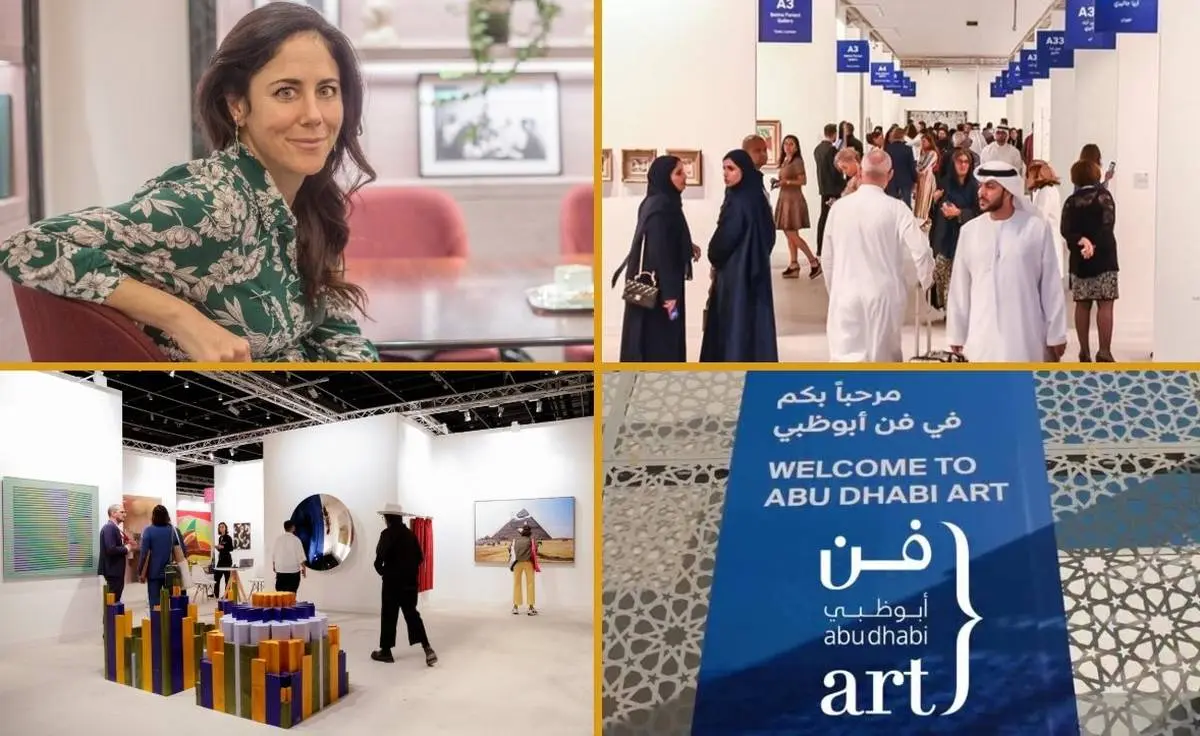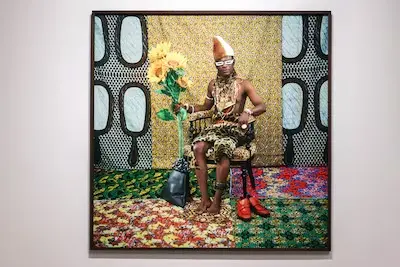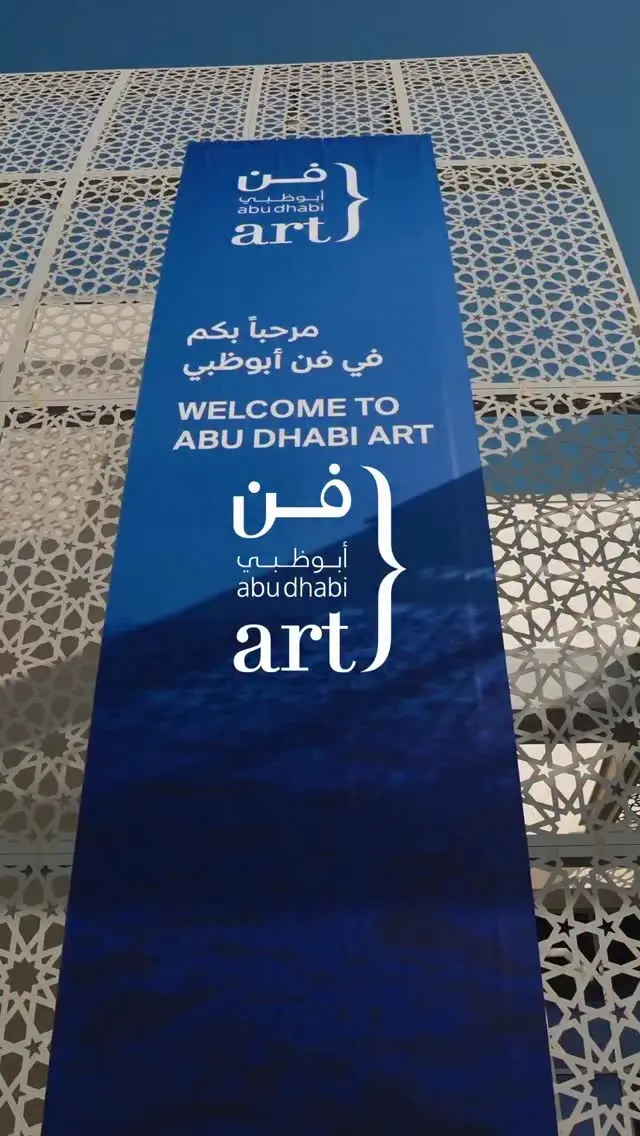
A strong foundation for the next chapter: Dyala Nusseibeh reflects on the legacy of Abu Dhabi Art and the path ahead
Even if Abu Dhabi Art will not carry on by name, it has provided a solid foundation from which to continue under a new, international banner.
ArtDayME- Razmig Bedirian, The National: The 17th Abu Dhabi Art is a valediction, the last statement the fair will make before it rebrands as Frieze Abu Dhabi next year.
For the event’s art director, Dyala Nusseibeh, it is a moment to take stock of how much it has accomplished. Since its inception in 2007, Abu Dhabi Art has sought to break out of the traditional art fair template. Its talks, workshops and programming have been vital in nourishing the art ecosystem in the UAE. They have championed the next generation of artists and helped spotlight under-represented art histories from the region, connecting it with the global discourse.

The concluding run of Abu Dhabi Art, running at Manarat Al Saadiyat from November 19 to 23, represents a culmination of these ambitions. More than 140 galleries from 37 countries are represented this year, a record for the annual fair. But the growth isn’t just quantitative. A key part of the fair has been about challenging West-centric narratives, and this year’s fair exemplifies this mission, particularly in the focus sections dedicated to the Gulf, Turkey and Nigeria.
“I think this is increasingly becoming a space where Abu Dhabi can lead,” Nusseibeh says. “It’s important to have different centres for the art market, alongside critical research and knowledge production.”
The Nigerian focus is a good example of how these different components work “hand in hand”, according to Nusseibeh. Presented in collaboration with the Federal Ministry of Art, Culture, Tourism and the Creative Economy of Nigeria, the section underscores a shared ambition between the UAE and Nigeria.

The Chief: He Who Sold Africa to the Colonists (1997) by Nigerian artist Samuel Fosso. Victor Besa / The National
“They've centred the creative economy as being important to their future growth and development as a nation,” Nusseibeh says. “It is parallel to what Abu Dhabi is doing. Here, it is one of the post-oil economies that is going to be increasingly important, enabling growth, innovation and creativity.”
Presented in the centre of the fair, the Nigerian focus features seven galleries with modern and contemporary names. Among the highlights is a collection of works from Osogbo School, the 1960s art movement that blended Yoruba motifs with modernist sensibilities. These include a painting by Twins Seven Seven that shows an ancient flute player, depicted with kaleidoscopic flair, as well as Adebisi Fabunmi, whose vibrant works teeter between the figurative and abstract.
Meanwhile, works by contemporary names, such as Samuel Fosso, Joseph Mobolaji Aina and Isaac Emokpae, show a riveting diversity of materials and themes, showing how Nigerian art has continued to develop since the Osogbo School.
“The fact that we have this Nigeria focus in the middle of the fair is also speaking to a decentring of traditional art market hubs,” Nusseibeh says. “Some of the works from the Osogbo School were just on show at the Tate Modern.”

Nofa (1980) by Turkish artist Fahrelnissa Zeid. Photo: Razmig Bedirian / The National
The focus on work from Turkey also presents interesting regional connections, particularly through Fahrelnissa Zeid. The Turkish artist is best known for her rippling abstract works, but the fair is also presenting a selection of her vivid, large-scale portraits. While Zeid was a trail-blazer in her native Istanbul, as one of the first women to go to art school, she was also highly influential in the immediate region, particularly with the art school she founded in Amman.
“There are some rare works of hers to come to the market,” Nusseibeh says. “It is a significant thing to have them on view here. She travelled a lot in the region. She went to Iraq and ended up in Amman, mentoring a group of female artists.”
Other highlights include Gulsun Karamustafa, whose miniature-esque works reflect on socio-political issues with Turkey, including the turbulence of the country’s nation-building process.
“Some of the artists were undergoing difficult and challenging times politically and socially. They were reflecting that in their work,” Nusseibeh says. “That also speaks to the region. There are certain correspondences there that are interesting to think about.”
The section dedicated to artists from around the Gulf includes a healthy mix of established and emerging names.
Works by Emirati pioneers, such as Hassan Sharif and Mohammed Kazem, are displayed next to those by Alia Zaal. Saudi artists Sami Al Marzoogi, Manal Al Dowayan, Sara Alabdali and Raeda Ashour are represented, as is Nasser Al-Yousif, a luminary of Bahrain’s modern art movement, and Qatari artist Tarek Darwish.
While the section is not meant to be a comprehensive look of practices from across the Gulf, it does provide a thought-provoking breadth. “It is not intended as a survey show,” Nusseibeh says. “It's an opportunity through each presentation to dive into the incredible work that different artists were doing at different points. To think about it critically.
“I think that's where, as a fair, we probably do some quite useful work for the wider ecosystem, in working galleries that are important stakeholders to put these art histories forward, to narrate the times we are living in today.”

Nusseibeh expects this ethos to carry forward. Even if Abu Dhabi Art will not carry on by name, it has provided a solid foundation from which to continue under a new, international banner.
“This year’s Abu Dhabi Art is three times the size of what it was in its smallest iteration,” Nusseibeh says. “It has reached a certain level of growth and expansion. It’s contributing to knowledge production.
“The next step now is to take all that work and ensure it is further integrated globally, ensure all that valuable research and building of artists' careers is better networked.”
Frieze may be just the right platform to develop Abu Dhabi’s flagship contemporary art fair with an international scope. The organisation currently runs seven art fairs around the world, including in London, New York, Seoul, and Chicago. Frieze Abu Dhabi will be its eighth.
“It has an opportunity to, on the one hand, bring interesting cultural professionals and thinkers to the region,” Nusseibeh says. “On the other hand, it will take some of the amazing work and research and artistic production that's been happening here, global. Abu Dhabi does partnerships brilliantly. We’re working hand in hand, for the whole region, to become a hub that is better connected globally.”
Abu Dhabi Art is running at Manarat Al Saadiyat from November 19 to 23.

LEAVE A RELPY